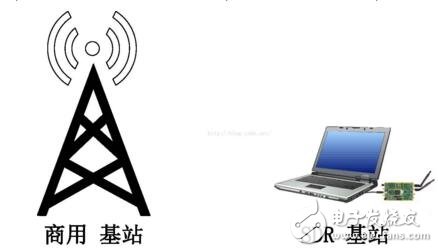The so-called Software Defined Radio (SDR) is a digital signal processing technology that uses software to define various functions of the radio station on the general hardware platform of programmable control: including front-end reception, intermediate frequency processing, and signal. Baseband processing and more. That is, the entire radio station is completely programmed by software from high frequency, intermediate frequency, baseband to control protocol. The core idea is to use a wideband "digital/analog" converter as close to the antenna as possible to digitize the signal as early as possible so that the functionality of the radio is as defined and implemented as possible in software. In summary, software radio is a new wireless communication architecture based on digital signal processing (DSP) chips with software as the core.
Its relationship with TD-SCDMA: TD-SCDMA is named because it includes three technologies: Smart Antenna, Synchronous CDMA, and Software Radio, and the first letter is S. "SCDMA", these have become the technical basis of TD-SCMA.

Software radio technology is a software- and computationally intensive form of operation. It is closely related to the conversion, computational speed, computational complexity, storage capacity, and data processing methods between digital and analog signals. These technologies determine the degree of development and speed of software radio technology. Broadband/multi-band antenna, A/D/A converter, DSP
(Digital Signal Processor) technology and real-time operating systems are key technologies for software radio.

Die casting is the pressure of metal molds on a die casting machine and is the most productive casting process. Die-casting machines are divided into two categories: hot-chamber die-casting machines and cold-chamber die-casting machines. The hot chamber die casting machine has a high degree of automation, less material loss, and higher production efficiency than the cold chamber die casting machine. The aluminum alloy die castings that are widely used today can only be produced on cold chamber die casting machines due to their high melting point. The main feature of die casting is that the molten metal fills the cavity under high pressure and high speed, and is formed and solidified under high pressure. The air in the cavity is wrapped inside the casting to form subcutaneous pores, so aluminum alloy die castings should not be heat treated, and zinc alloy die castings should not be sprayed on the surface (but can be painted). Otherwise, the internal pores of the casting will expand due to thermal expansion and cause the casting to deform or bubble when the above-mentioned treatment is performed. In addition, the mechanical cutting allowance of die castings should also be smaller, generally around 0.5mm, which can not only reduce the weight of castings, reduce the amount of cutting to reduce costs, but also avoid penetrating the surface dense layer and exposing subcutaneous pores, causing The workpiece is scrapped.
Resin sand molding,Resin Coated Sand Mold Casting,Furan resin sand casting,Green sand casting
Tianhui Machine Co.,Ltd , https://www.thcastings.com